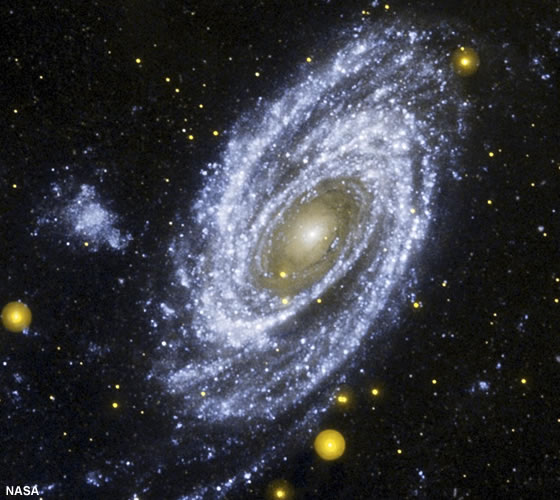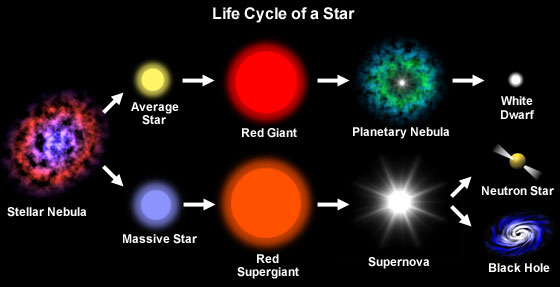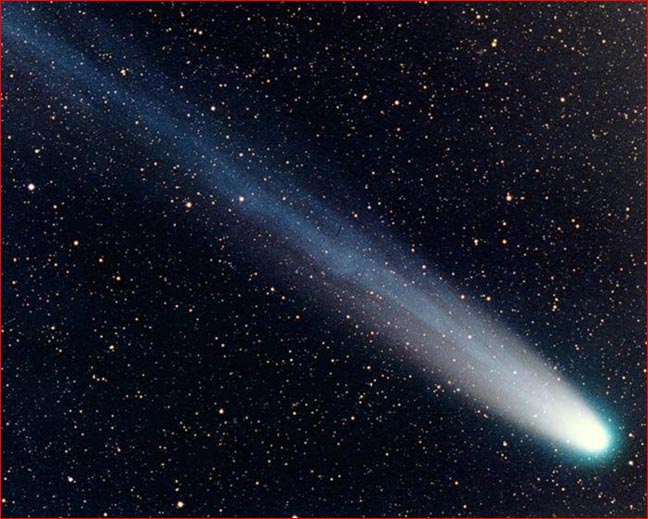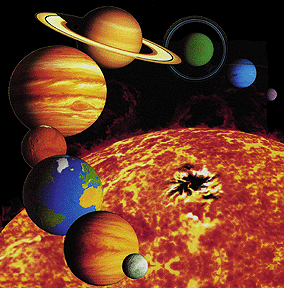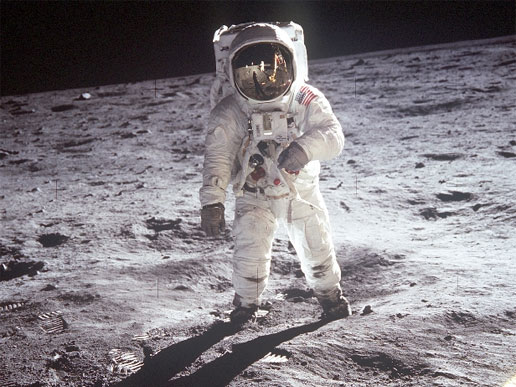Year 8 Science - Space
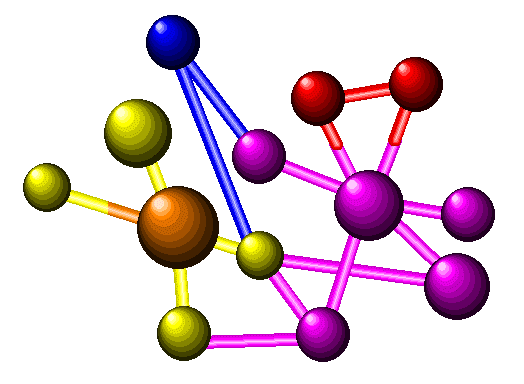
This is a preparatory quiz for the "Space Trek" Unit in Yr 8 Science.
- 1.
Our nearest star (apart from out Sun) is ______________?
Explanation
Proxima Centauri is part of the Alpha Centauri star system, which includes three stars: Alpha Centauri A, Alpha Centauri B, and Proxima Centauri. Proxima Centauri, a red dwarf, is the closest of the three to Earth, located approximately 4.24 light-years away. It is the nearest known star to the Sun and hosts at least two planets, one of which is believed to be Earth-sized and within the star's habitable zone where conditions might be right for liquid water to exist.Rate this question:
- 2.
The two main gases making up our Sun are:
- A.
Hydrogen and Neon
- B.
Hydrogen and Oxygen
- C.
Hydrogen and Helium
- D.
Hydrogen and Nitrogen
Correct Answer
C. Hydrogen and HeliumExplanation
The correct answer is Hydrogen and Helium. This is because the Sun is primarily composed of hydrogen, which makes up about 74% of its mass. Helium is the second most abundant element in the Sun, making up about 24% of its mass. These two gases undergo nuclear fusion in the Sun's core, releasing vast amounts of energy in the form of light and heat.Rate this question:
-
- 3.
Our galaxy is called ........
- A.
The Crab Galaxy
- B.
The Milky Way Galaxy
- C.
The Andromeda Galaxy
- D.
The Ford Galaxy
Correct Answer
B. The Milky Way GalaxyExplanation
The correct answer is The Milky Way Galaxy. The Milky Way is the name of our galaxy, which is a barred spiral galaxy. It is named after the band of light that can be seen in the night sky, which is caused by the concentration of stars and other celestial objects in the galactic plane. The Milky Way is home to our solar system and billions of other stars, as well as various other celestial objects such as planets, asteroids, and comets.Rate this question:
-
- 4.
The following diagram shows the possible lifecycles of a star. At which stage is our Sun presently?
- A.
Average Star
- B.
Massive Star
- C.
Red Giant
- D.
Red Supergiant
Correct Answer
A. Average StarExplanation
The Sun is presently in the stage of an Average Star. This is because the Sun is a main-sequence star, which is the longest stage in a star's lifecycle. During this stage, a star like the Sun burns hydrogen in its core to produce energy through nuclear fusion. The Sun has been in this stage for about 4.6 billion years and is expected to remain in this stage for several billion more years before it evolves into a Red Giant.Rate this question:
-
- 5.
Probably the most famous comet is ___________ Comet. It returns to Earth approximately every 75 years.
- A.
Galileo's
- B.
Newton's
- C.
Einstein's
- D.
Halley's
Correct Answer
D. Halley'sExplanation
Halley's Comet is the correct answer because it is widely known as one of the most famous comets. It is named after the astronomer Edmond Halley who predicted its return in the 18th century. Halley's Comet has a periodic orbit and returns to Earth approximately every 75 years, making it a well-known and anticipated celestial event.Rate this question:
-
- 6.
The speed of light is approximately:
- A.
300 000 000 km per sec
- B.
300 000 km per sec
- C.
30 000 km per sec
- D.
300 000 km per hour
Correct Answer
B. 300 000 km per secExplanation
The speed of light is approximately 300,000 km per second. This is a well-known scientific fact that has been measured and confirmed through various experiments and observations. The speed of light is an important constant in physics and plays a crucial role in many scientific theories and calculations.Rate this question:
-
- 7.
The planets in our Solar System can be broken up into two distinct groups:
- A.
Terrestrial and Aqua planets
- B.
Solar and Gas planets
- C.
Solar and Lunar planets
- D.
Terrestrial and Gas planets
Correct Answer
D. Terrestrial and Gas planetsExplanation
The correct answer is Terrestrial and Gas planets. This is because the planets in our Solar System can be categorized into two main groups based on their composition and characteristics. Terrestrial planets, such as Mercury, Venus, Earth, and Mars, are rocky and have solid surfaces. Gas planets, such as Jupiter, Saturn, Uranus, and Neptune, are primarily composed of gases and lack a solid surface. This categorization helps us understand the different types of planets in our Solar System and their unique features.Rate this question:
-
- 8.
A black hole is formed from:
- A.
A planet
- B.
A comet
- C.
A star
- D.
A galaxy
Correct Answer
C. A starExplanation
A black hole is formed from a star. When a massive star exhausts its nuclear fuel, it undergoes a supernova explosion, and its core collapses under the force of gravity. If the core's mass is above a certain threshold, it becomes a black hole. The intense gravitational pull of a black hole prevents anything, including light, from escaping its event horizon. Planets, comets, and galaxies do not have enough mass or gravitational pull to form a black hole.Rate this question:
-
- 9.
Man's first landing on the moon in Apollo 11 was in the year:
- A.
1967
- B.
1969
- C.
1971
- D.
1973
Correct Answer
B. 1969Explanation
In 1969, the Apollo 11 mission successfully landed the first humans on the moon. This historic event was a major milestone in space exploration and a significant achievement for mankind. The mission was led by Neil Armstrong and Buzz Aldrin, who became the first and second individuals to walk on the lunar surface. The year 1969 is widely recognized as the year of this momentous lunar landing, making it the correct answer.Rate this question:
-
- 10.
The most likely planet to be inhabited by humans after Earth is:
- A.
Mars
- B.
Venus
- C.
Jupiter
- D.
Pluto
Correct Answer
A. MarsExplanation
Mars is the most likely planet to be inhabited by humans after Earth due to several reasons. Firstly, Mars has a similar day length and tilt to Earth, making it more suitable for human habitation. Secondly, Mars has abundant water resources in the form of ice, which can potentially be used for drinking water and agriculture. Additionally, Mars has a thin atmosphere that can be modified to make it more habitable for humans. Lastly, Mars has been the focus of extensive research and exploration, with plans for future manned missions already in progress.Rate this question:
-
Quiz Review Timeline +
Our quizzes are rigorously reviewed, monitored and continuously updated by our expert board to maintain accuracy, relevance, and timeliness.
-
Current Version
-
Mar 25, 2025Quiz Edited by
ProProfs Editorial Team -
Dec 13, 2010Quiz Created by
Healyrj
 Back to top
Back to top



